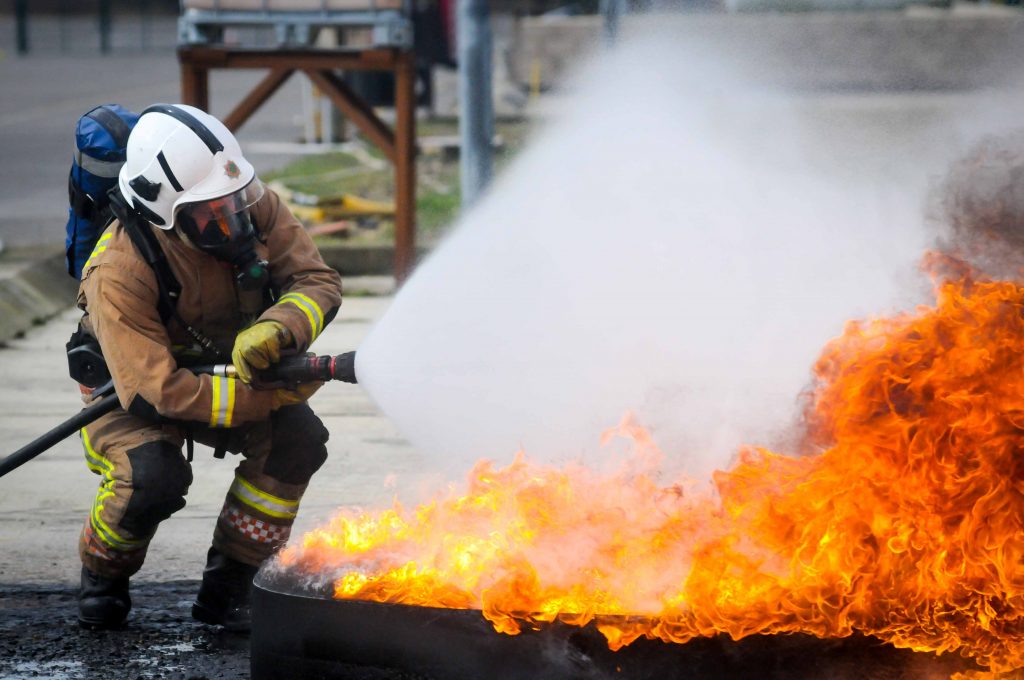Staffordshire Commissioner Ben Adams welcomes the proposals in the government’s White Paper on Fire Reform, which sets the direction for Fire & Rescue nationally in three key areas: governance, people and professionalism.
In 2018, Staffordshire became the second Police & Crime Commissioner area to be given governance of the Fire & Rescue service alongside the police service – one of four areas nationally to make the ground-breaking transition.
In Staffordshire this has provided a more joined-up approach between the two emergency services, with collaborative work bringing real benefits in how both services keep communities safe.
Ben Adams said: “The White Paper reflects the conversations I have been having with our Fire & Rescue service. I believe that we have a service that is ready, willing and able to do more to protect the public.
“In Staffordshire, we’re experiencing first-hand the benefits of a single point of governance, as it allows for a more efficient, responsive service, able to react quickly to emerging public demand. We saw this during the pandemic, where the service stepped up as part of the collective effort regionally, delivering food packages and helping vulnerable people, delivering PPE, and supporting testing and vaccination sites.
“Bringing Fire & Rescue and Police under a single point of governance in Staffordshire has also helped us make savings around shared services and locations, as part of a forward-thinking joint estates plan.
“Police and Fire & Rescue teams are now co-located in stations at Hanley in Stoke-on-Trent and Tamworth – a key step in a programme of collaboration which has seen shared services developed in estates, procurement, Human Resources, Finance and Corporate Communications.
“The Fire Minister, Lord Stephen Greenhalgh, visited Stoke-on-Trent in 2021 to see for himself the Fire & Rescue and Police building, which was completed during the pandemic and provides a much-improved working environment for both services.
“The governance model we have here is also better suited to transformation, and we can demonstrate the huge potential of a modern Fire & Rescue service. Given more flexibility to address local need, there is a real opportunity for more imaginative and radical options for keeping people and places safe.
“Working alongside the Chief Fire Officer, I’m looking for the service to go beyond what it currently does, using the expertise and capability of its teams to assist in other areas of demand, such as health.
“As I set out in my recent Fire & Rescue Plan, today’s service has a greater role to play in responding to the impacts of climate change, the fire risks associated with waste and environmental crime, and the extra demands on buildings and public safety resulting from the tragic events at Grenfell Tower.
“Grenfell brought into sharp relief the need for the service to increasingly focus its efforts on vulnerable locations. Staffordshire Fire & Rescue Service is already responding positively to this challenge with the recruitment of more specialist staff, able to deliver technical fire safety audits, inspections of premises and the use of enforcement powers. It is already clear that protection work will be an increasing priority for future investment and resource allocation.
“So far, a lot of this work is built on the professionalism and enthusiasm of Fire & Rescue staff in Staffordshire. In terms of formal roles, terms and conditions, however, the sector as a whole has remained largely unchanged for decades, and reforming it to be able to meet new challenges is in the public interest.
“The work that Fire & Rescue services do has changed significantly in recent years, and the demands they face are more complex and varied than ever before. We have a real opportunity to demonstrate not only the benefits of aligning the service more closely with the police, sharing resources and being stronger together, but also looking forward to what modern, 21st century services can be.”



